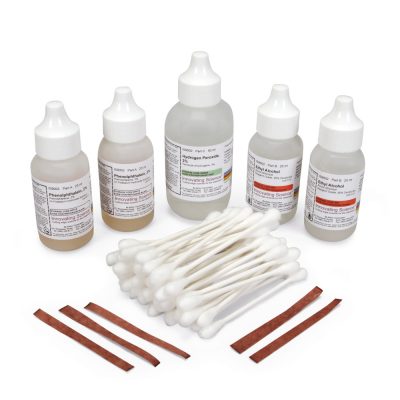Project Report For Blood Test Kits
Introduction
Project Report For Blood Test Kits is as follows.
Blood test kits, also known as at-home blood testing kits or home blood testing kits, are medical equipment that enable people to take a blood sample and perform specific laboratory tests in the privacy of their own homes. These kits are a handy alternative to visiting a healthcare centre or laboratory for blood testing, particularly for people with restricted mobility, hectic schedules, or who prefer the privacy of doing tests at home.
A typical blood test kit will include all of the required equipment and instructions for taking a blood sample, as well as transportation to a laboratory for examination. Depending on the type of test, the kit may comprise lancets for pricking the finger, sterile swabs, alcohol pads for sterilisation, blood collection tubes, and bandages or adhesive strips to cover the puncture wound.
People commonly use a blood test kit by following the step-by-step instructions included with the product. Cleaning the fingertip, pricking the skin with a lancet to acquire a small drop of blood, and transferring the blood onto a collecting device such as a blood collection tube or a test strip are typical steps. After that, the sample is carefully packed and delivered to a laboratory for examination. Some kits offer immediate results, while others need the sample to be processed by a laboratory and the findings to be sent electronically or through a healthcare practitioner.
Depending on the objective of the test, blood test kits can be used to measure a variety of parameters and indicators in the blood. Blood glucose monitoring for diabetes management, lipid profile evaluation for cardiovascular health, haemoglobin levels for anaemia identification, and sexually transmitted infection testing are all common tests. When used appropriately, these kits are meant to deliver accurate and trustworthy findings equivalent to those obtained in a clinical environment.
While blood test kits are convenient and easy to use, it is crucial to remember that they are not appropriate for all types of blood testing. Some tests need more advanced laboratory procedures, specialised equipment, or professional interpretation, which a home testing kit may not be able to provide. Furthermore, certain illnesses may necessitate regular monitoring or follow-up with a healthcare expert to ensure correct test administration and interpretation.

Types Of Blood Test Kits
Glucose test kits – These kits are used to test the level of glucose (sugar) in the blood. They are often used to diagnose and monitor diabetes.
Cholesterol test kits – These kits are used to measure the level of cholesterol in the blood. The risk of heart disease and stroke can increase with high cholesterol levels.
Hemoglobin test kits – These kits are used to measure the level of hemoglobin (a protein in red blood cells) in the blood. Low hemoglobin levels can indicate anemia.
Liver function test kits – These kits are used to measure the level of enzymes and other substances in the blood that are produced by the liver. Levels that are abnormal may be a sign of liver illness or injury.
Pregnancy test kits – These kits are used to detect the presence of human chorionic gonadotropin (hCG) in the blood, which is a hormone produced during pregnancy.
Project Report Sample On
Blood Test Kits
Get Completely Custom Bankable Project Report
Market Potential for Blood Test Kits
The market for home blood testing equipment was valued at US$14.76 billion. With a CAGR of 10.8% from 2023 to 2033, it is expected that this market will earn US$ 16.35 billion in sales by 2023 and US$ 45.6 billion by 2033.
The majority of the anticipated growth in the market for home blood testing devices can be attributed to elements like the expansion of home blood testing devices for disease diagnosis at home, the rise in the prevalence of chronic diseases, improved health consciousness, rising spending power, and the protracted existence of local businesses in the area. The increased level of public awareness of home care testing has led to the potential expansion of the industry.
The general public’s attention has turned away from curative medications and towards preventative healthcare as a result of an increase in illness outbreaks. It gave producers in this industry a range of choices. Demographic shifts and rising healthcare spending per person as a result of improving living standards both contributed to the market’s brisk growth. Diagnosis at home is crucial for saving money on healthcare and for an early diagnosis of illness.
Due to the rising prevalence of diabetes and the development of cutting-edge home blood testing equipment and kits, there is an increasing need for quick testing kits, creating a market potential for at-home testing. improved demand for diabetes testing kits, HIV testing kits, and other kits, as well as improved awareness of the benefits of home testing equipment, are also expected to contribute to the growth of the home blood testing devices market.

